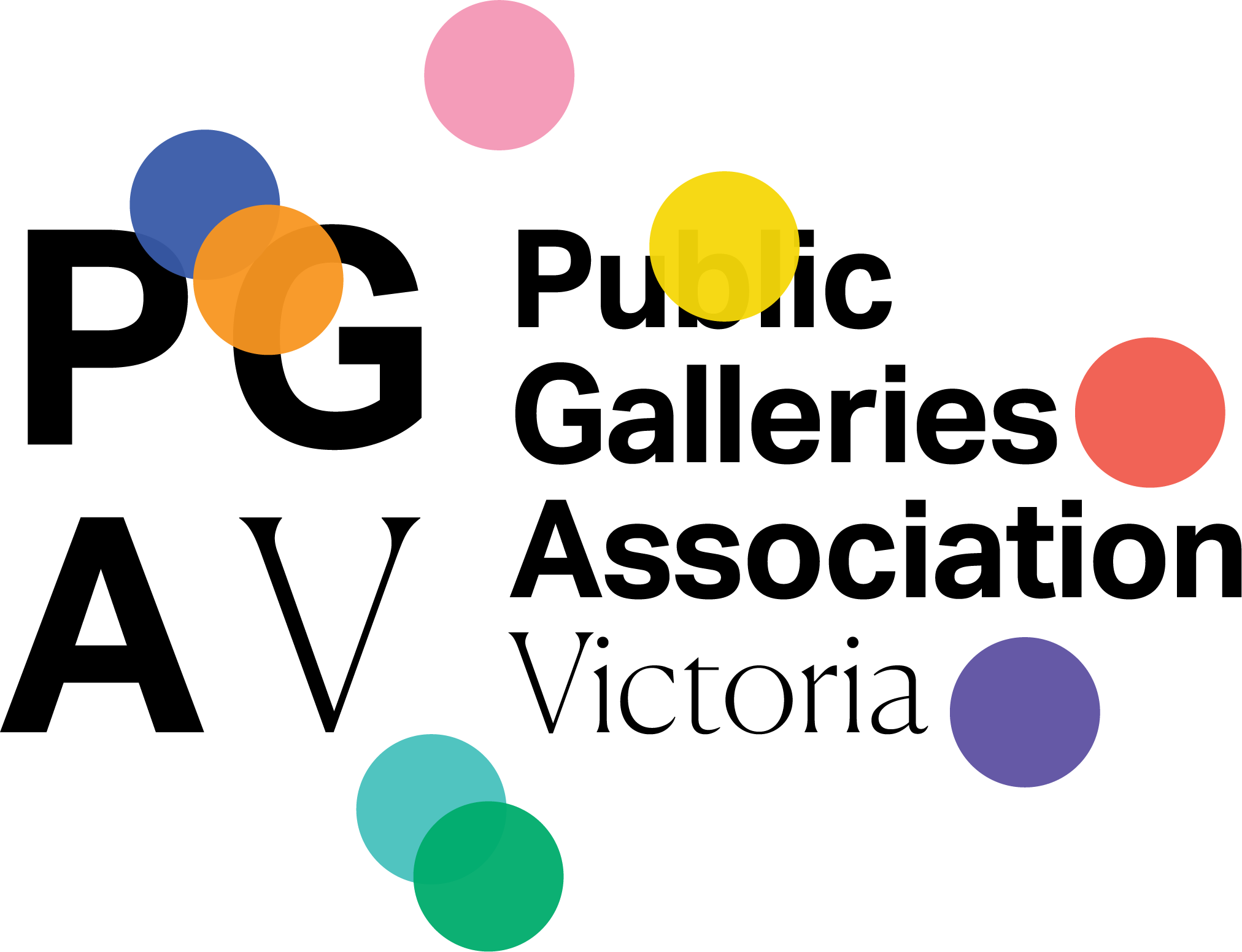gallery technician
Professions in the Public Gallery Sector

christopher miller
Senior Gallery Technician
Latrobe Regional Gallery
Date: August 2023
the role of gallery technician
Gallery Technicians have diverse experience in handling, installing and demounting exhibitions. Key responsibilities include installation and demounting of artworks, carpentry, painting and lighting. They use ladders, power tools and hand tools on a regular basis and may hold an elevated work platform license. They support the unloading and loading of crates and heavy object moving and setting up lighting, sound systems and audio visual presentations.
For information about roles within public galleries see the PGAV Fact Sheet: Staffing Levels & Position Titles
Image: Christopher Miller.
Artwork: Juan Ford, Archetypist, 2019. Oil on linen, 90 x 75cm. Courtesy of the artist and THIS IS NO FANTASY, Melbourne.
How did you get started in your career and what formal qualifications or experience do you have?
I had always considered myself a creative person so I decided to pursue an education in visual arts. I obtained my Bachelor of Visual Arts in 2015 from Monash University and went on to obtain my Master of Visual Arts in 2017. Like many people in the art world, and those who train as artists, I entered the gallery by volunteering at art galleries. This gave me a wide range of experience across multiple gallery roles and strengthened my interest in becoming a gallery technician.
I volunteered regularly at the Latrobe Regional Gallery (LRG) which later helped me secure a casual role as a Gallery Assistant. During this time I worked under many very talented and knowledgeable Senior Gallery Technicians. The wealth of knowledge I gained, along with my ongoing dedication to LRG secured me my dream job as Senior Gallery Technician.
What does your role as Gallery Technician encompass?
A lot of people would assume a Gallery Technician primarily performs the physical act of hanging, mounting or placing artwork. This is true, but this is actually a very small part of my role. My duties are much broader - I work closely with the gallery collection, maintain conservation materials, manage casual technical staff, attend off-site gallery hangs, construct/obtain exhibition furniture, liaise with curators, gallery staff and of course artists to name just a few things.
What knowledge and skills do you think are most needed for this role?
This role requires an eye for detail and perfectionism. There can be no cutting corners in this job; when you do something it needs to be able to stand up under scrutiny. For example, when you hang a work it needs to be secure, straight and safe. You must be able to guarantee the safety of an artwork, no matter the medium, both for the safety and conservation of the artwork but also for the safety of the public.
Communication is of course crucial to the role. When handling art there needs to be a constant back and forth between those handling and installing art, this makes everyone more comfortable, feel in control and ensures no damage occurs.
What do you enjoy most about your role?
Every time an exhibition is installed I still get the thrill of seeing it completed and appreciating the work that has gone into the install. It truly is a group effort to deliver an exhibition that the public can often take for granted. People will view an exhibition and simply marvel at (or criticise) the works of an artist, there often isn’t consideration into the careful selection and choices made by curators, or hours of work put into all technical aspects of an exhibition, lighting, painting, hanging etc.
It’s this role, and my time in galleries, that has taught me, and shown me, how much work goes into even the simplest of choices.
What has been your career highlight so far?
Constantly being immersed in art, working closely with art and actually being in a position where I am required to handle art, often by well-known artists, makes me feel very lucky and privileged. There’s no one highlight, every exhibition is just as important to me as the last.
What are the key issues for public galleries into the future?
Being able to introduce new people and expose them to art is something that all galleries aim to do, especially with a trend towards a digital world we still need physical bodies though gallery doors. Galleries will need to continue in the future to cater to a wide range of audiences and not just target the educated elite. Art needs to be approachable and obtainable to all audiences.
The Public Galleries Association of Victoria (PGAV) acknowledges the Wurundjeri Woi-Wurrung people of the Kulin Nation as the Traditional Owners of the lands where our office is located, and all Traditional Owners of country throughout Victoria and Australia. We recognise Aboriginal and Torres Strait Islander peoples enduring traditions and continuing creative cultures. We pay our respect to Elders past, present and emerging.
We are an LGBTQIA+ friendly organisation that celebrates diversity. We are committed to providing safe, culturally appropriate, and inclusive services for all people, regardless of their ethnicity, faith, disability, sexuality, or gender identity.






